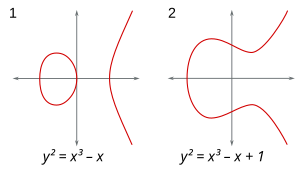Crossed ladders problem
Name: Jodi Junker
My age: 32
Country: Netherlands
Home town: Oudkarspel
Post code: 1724 Xg
Street: Waterlelie 22
my page - www.hostgator1centcoupon.info

In real algebraic geometry, Harnack's curve theorem, named after Axel Harnack, describes the possible numbers of connected components that an algebraic curve can have, in terms of the degree of the curve. For any algebraic curve of degree m in the real projective plane, the number of components c is bounded by
The maximum number is one more than the maximum genus of a curve of degree m, attained when the curve is nonsingular. Moreover, any number of components in this range of possible values can be attained.

A curve which attains the maximum number of real components is called an M-curve (from "maximum") – for example, an elliptic curve with two components, such as or the Trott curve, a quartic with four components, are examples of M-curves.
This theorem formed the background to Hilbert's sixteenth problem.
References
- D. A. Gudkov, The topology of real projective algebraic varieties, Uspekhi Mat. Nauk 29 (1974), 3–79 (Russian), English transl., Russian Math. Surveys 29:4 (1974), 1–79
- C. G. A. Harnack, Über Vieltheiligkeit der ebenen algebraischen Curven, Math. Ann. 10 (1876), 189–199
- G. Wilson, Hilbert's sixteenth problem, Topology 17 (1978), 53–74

